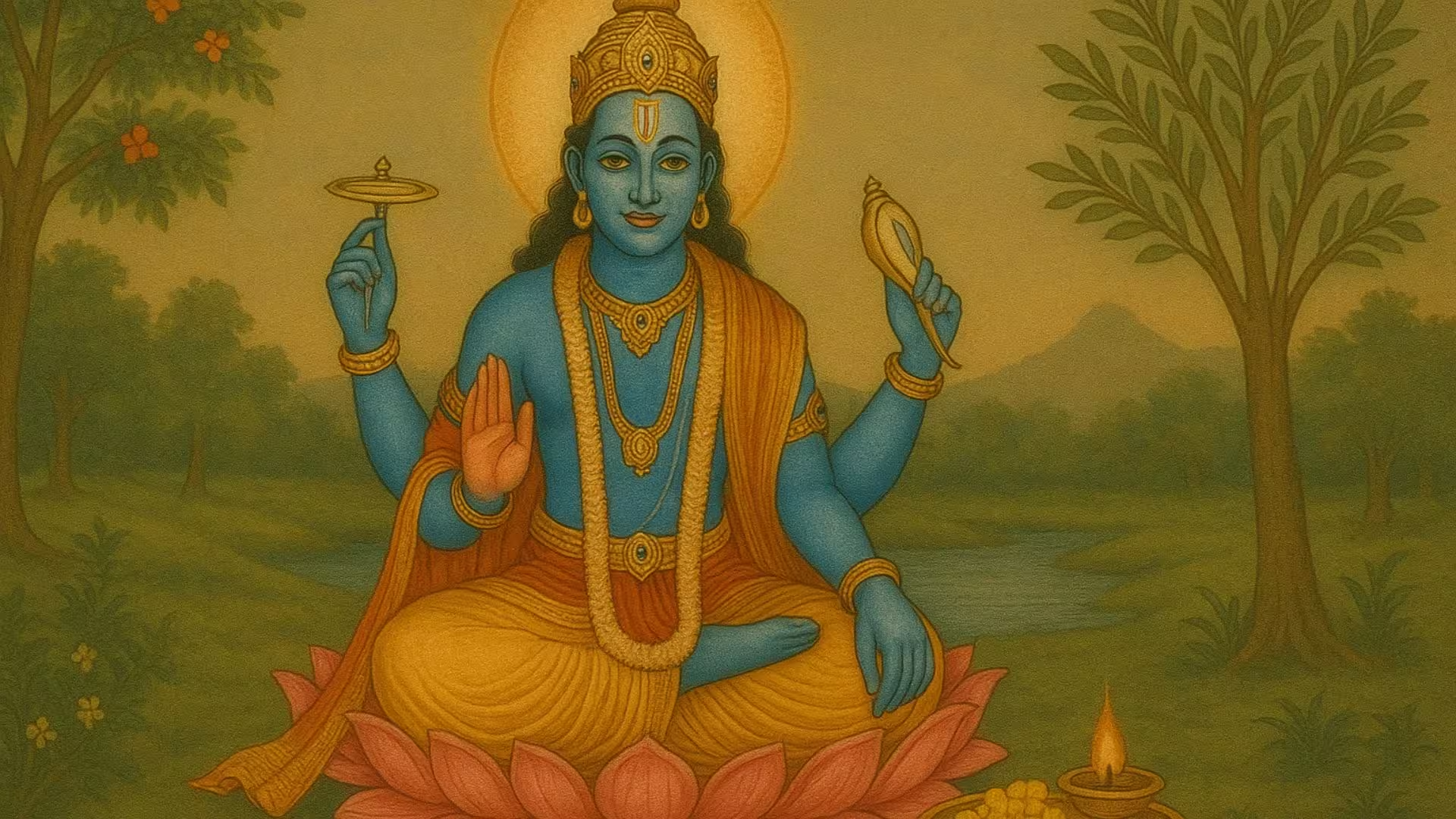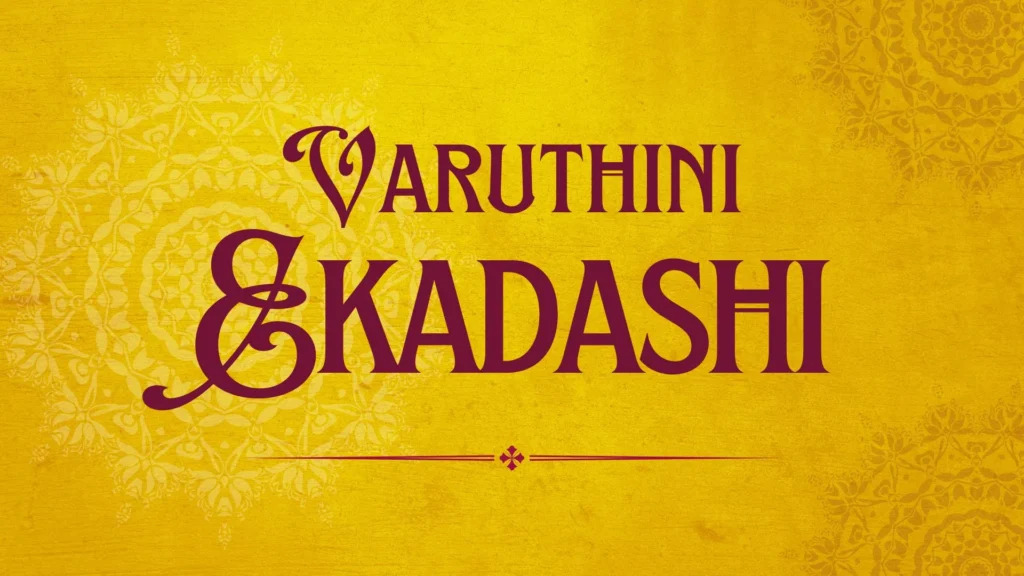
Table of Contents
Mohini Ekadashi 2025
Mohini Ekadashi is one of the most spiritually potent days observed by Hindus and is especially known for its power to absolve sins and grant liberation. Falling during the Shukla Paksha (waxing phase of the moon) in the month of Vaishakha, this Ekadashi is named after Lord Vishnu’s enchanting female avatar — Mohini. In 2025, Mohini Ekadashi will be observed on Thursday, 8th May. Devotees keep a strict fast, engage in prayers, and recite Vishnu Sahasranama to seek divine blessings and freedom from past karmic burdens.
Mohini Ekadashi 2025 Date and Timings
- Ekadashi Tithi Begins: 10:19 AM on 7th May 2025
- Ekadashi Tithi Ends: 12:29 PM on 8th May 2025
- Parana Time (Fast Breaking Time): Between 05:34 AM and 08:16 AM on 9th May 2025
- Day of Observance: Thursday
Parana should be done after sunrise and before the end of Dwadashi tithi. Observing proper time is essential for gaining the full spiritual benefits of the fast.
Spiritual Significance of Mohini Ekadashi
Mohini Ekadashi is a deeply symbolic observance. It commemorates the day Lord Vishnu took the form of Mohini to distribute Amrit (nectar of immortality) among the Devas and protect it from Asuras. Spiritually, the day signifies the triumph of divine charm and wisdom over deception and ego. Observing this Ekadashi helps devotees overcome inner negativity, illusions (Maya), and attachments, guiding them toward moksha (liberation).
Customs, Rituals, and Traditions
On this day, devotees:
- Wake up early during Brahma Muhurta
- Take a holy bath and wear clean, preferably white or yellow clothes
- Clean the puja area and place Lord Vishnu’s idol or photo
- Offer tulsi leaves, sandalwood paste, flowers, fruits, and sweets
- Chant Vishnu Sahasranama, Gita verses, and Mohini Ekadashi Vrat Katha
- Maintain a strict fast — Nirjala (without water) or Phalahar (fruits and milk)
- Avoid anger, harsh speech, and negative thoughts
- Spend the day in devotional activities and refrain from worldly indulgences
What to Eat and Avoid During the Fast Allowed (for Phalahar fast):
- Fruits (banana, apple, papaya, pomegranate)
- Milk, buttermilk, and curd
- Sabudana (sago), peanuts, makhana (fox nuts)
- Sendha namak (rock salt)
Avoid:
- Grains (wheat, rice, lentils)
- Spices, table salt, garlic, and onion
- Alcohol, meat, or tobacco
Note: Those observing Nirjala fast should abstain from food and water completely.
Step-by-Step Rituals of Mohini Ekadashi Morning:
- Wake up during Brahma Muhurta
- Take a bath and wear clean clothes
- Clean the puja room and set up Lord Vishnu’s idol/photo
- Offer water, tulsi, fruits, and chant Om Namo Bhagavate Vasudevaya
Daytime:
- Read or listen to Mohini Ekadashi Vrat Katha
- Chant Vishnu Sahasranama or Vishnu mantras
- Refrain from speaking lies or indulging in negative behavior
Evening:
- Light a diya with ghee or sesame oil
- Perform Vishnu aarti with full devotion
- Meditate or read the Bhagavad Gita
Parana (Next Morning):
- Perform the Parana between 06:55 AM and 08:58 AM
- Break the fast with tulsi water and light sattvic meal
Mohini Vrat Katha : The Sacred Legend of Mohini Ekadashi | Vrat katha
Benefits of Observing Mohini Ekadashi Vrat
- Releases one from the cycle of birth and death (moksha)
- Burns past sins and cleanses the soul
- Brings peace of mind, clarity, and spiritual awakening
- Enhances inner strength and willpower
- Fulfills righteous desires and grants divine blessings
Mythological Story Behind Mohini Ekadashi
The story of Mohini Ekadashi traces back to the Samudra Manthan episode. After the Devas and Asuras churned the ocean, the nectar of immortality (Amrit) emerged. A dispute began over its distribution. To protect the Amrit from falling into the wrong hands, Lord Vishnu assumed the form of an extraordinarily beautiful woman named Mohini. With her charm and wit, Mohini distracted the Asuras and distributed the Amrit solely to the Devas. This event symbolizes the divine intervention that protects righteousness (Dharma) and prevents evil from triumphing.
Important Mantras to Chant on Mohini Ekadashi
- “Om Namo Bhagavate Vasudevaya”
Meaning: I bow to Lord Vishnu, the Supreme Being. - “Vishnu Sahasranama Stotra” (Recitation of 1000 names of Vishnu)
- “Om Shri Vishnave Namah”
Meaning: Salutations to Lord Vishnu - Mohini Ekadashi Specific Katha Path (Can be recited from Skanda Purana)
Frequently Asked Questions (FAQs)
Q1: Can I drink water during Mohini Ekadashi fast?
A: Yes, if you’re not observing Nirjala (dry) fast. Phalahar devotees may consume water, fruits, and milk.
Q2: Can pregnant women observe this vrat?
A: They should consult a doctor.
Q3: What happens if I miss Parana timing?
A: Missing Parana timing diminishes the spiritual benefits of the fast. Always break fast within the Dwadashi window.
Q4: Is it mandatory to stay awake the whole night?
A: While not mandatory, staying awake and engaging in bhajans or scripture reading is considered highly auspicious.
Q5: Can children observe Mohini Ekadashi?
A: Yes, in a simplified form with fruits and prayers.
Conclusion
Mohini Ekadashi is more than just a religious observance—it is a journey toward self-purification and divine connection. Observing this vrat with devotion and sincerity helps one conquer worldly attachments, cleanse karmic debts, and move closer to moksha. As Lord Vishnu’s Mohini form symbolized the preservation of cosmic order, so too does this Ekadashi guide us toward spiritual balance. Make this Mohini Ekadashi in 2025 a day of transformation and divine grace.


